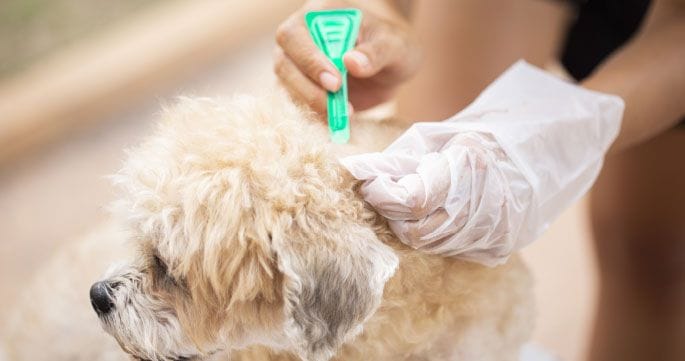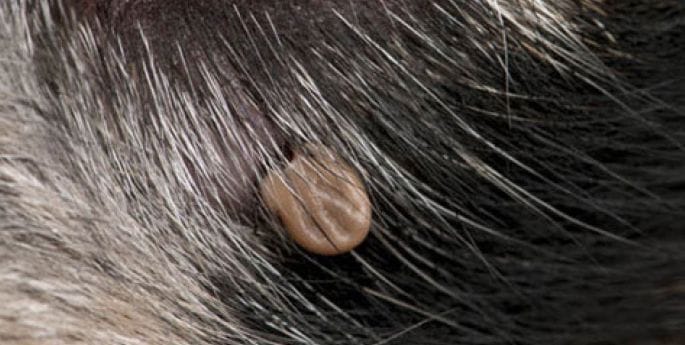Flea and Tick Control
Flea Control


Spotting fleas isn’t always easy - they are small and fast, and some dogs can show signs of severe itchiness and irritation when only a few fleas are present. The other thing to consider is that the adult fleas you see on your dog are only part of the problem. You may be surprised to learn that adult fleas (the ones you see) make up only about 5% of the total population. The remaining 95% (eggs, larvae and pupae) are found in carpets and bedding - in fact anywhere in your house! Each female flea can lay up to 50 eggs per day so it doesn’t take long for an infestation to take hold.
It is important to remember that fleas aren’t just a problem in the summer. Use flea control all-year-round. You, and your pet, will be happier for it.
Tick Control
The most common ticks infesting dogs in Australia are the paralysis tick, the brown dog tick, and the bush tick.
Paralysis ticks

How does the paralysis tick cause toxicity?
After the tick has attached to the host animal it sucks blood and then secretes a toxin that can cause severe illness, or even death, in cats and dogs. Dogs and cats of any age can be affected.
Signs of tick paralysis include: loss of coordination in the hind legs (wobbly or not being able to get up) which may progress to the front legs, change in bark, retching, coughing or vomiting, loss of appetite, or laboured or rapid breathing. Any of these signs may indicate the presence of a paralysis tick. If your dog shows any of these signs you should seek veterinary attention as soon as possible.

Tips for reducing the risk of tick paralysis include:
- The year-round use of effective tick control products for all dogs and cats that are living in, or travelling to, known paralysis tick regions.
- Search your dog daily for ticks - although tick control products will greatly reduce the risk of tick paralysis, it only takes one tick to cause tick paralysis. For this reason, it is important to also perform daily tick searches on your pet.
- Reduce exposure to ticks in the environment (e.g. clean up leaf litter and debris, minimise or restrict your pet’s access to bushy environments)
- If you find a tick, remove it immediately, and seek veterinary attention
Brown dog ticks and bush ticks
Brown dog ticks and bush ticks do not cause tick paralysis, but they can cause skin irritation and also transmit other important diseases e.g. Babesia parasites which invade the red blood cells of dogs causing anaemia (which can be fatal).
We are more than happy to show you how to do a thorough tick search and recommend appropriate tick control products for your pet. Please call us to discuss.
)
